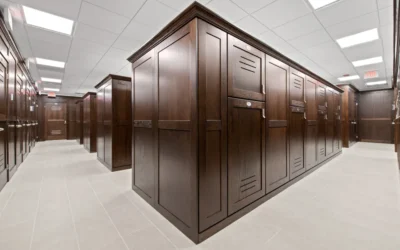The sizable gap between seller asking prices and the amount buyers are willing to pay is contributing to a drop in commercial real estate sales activity.
Self-storage transactions have dropped 36% in the past year from $6.3 billion in 2016 to $4.1 billion in 2017, according to Real Capital Analytics. Yet the investment sales market is not as bleak as that data suggests.
“Transaction volume is down,” says Barbara Guffey, a senior director at HFF in Houston. However, there were some larger M&A transactions that occurred in 2016 that elevated volume. “When you take those out, volume is probably more of the norm to down slightly,” she adds.
2016 was a banner year because of the institutional deals that traded, agrees Joel Deis, vice president, regional manager and national director of the National Self Storage Group for Marcus & Millichap in Seattle. However, looking just at the private capital market, 2017 sales activity for deals under $10 million was just as active – if not more so – than 2016, he says. Those smaller deals also represent the majority of the self-storage marketplace.
REITs step back
Although REITs have not completely moved to the sidelines, they are less active than in the past. REIT buyers that accounted for 54% of acquisitions in 2016 dropped to 32% last year, according to RCA. For example, Public Storage has pulled back in its buying activity. Its purchase of 22 self-storage facilities last year for about $150 million is well below the $429 million in deals the company closed in 2016.
“It’s no secret that most of the REITs pulled back fairly significantly in 2017,” says Ryan Clark, director of investment sales for Tampa-based Skyview Advisors.
Some REITs are moving cautiously due to high property values and new supply that is impacting fundamentals in some markets. Public REITs also have been hampered by falling stock prices over the past two years, which has made cost of capital more expensive.
However, their retreat was partly offset by new capital entering the market from private equity funds and individual investors. According to RCA, private capital that accounted for 35% of buyers in 2016 jumped to 55% last year. So, the appetite to buy self-storage is still there, even as the buyer pool has shifted and investors have become less aggressive on pricing, adds Clark.
Pricing hits a plateau
Pricing is at or near the peak, and in many transactions there is a sizable difference, upwards of 100 basis points in some cases, between where owners are setting the ask price and what sellers are willing to bid.
“There’s no question that it remains a liquid market. It’s not as if we are at a standstill, but activity was down in 2017 and there continues to a divide between buyer and seller expectations,” says Clark.
At this stage in the cycle, it is very evident that buyers are valuing assets and assessing risk differently. Sellers remain confident because they are not seeing impacts to their operating fundamentals. So, their expectation for the value of their properties continues to be high. Meanwhile, buyers are wary of rising interest rates and the impact of new supply on property fundamentals.
That bid-ask is likely to continue into 2018.
“I don’t see buyers getting a whole lot more aggressive,” says Clark. And sellers don’t feel the same sentiment shift that the buyer pool is feeling, he adds.
The good news is that pricing seems to have settled on a plateau. RCA data shows that cap rates have been holding steady for more than two years now, hovering at 6.2% to 6.3% since third quarter 2015. According to the latest Green Street Advisors Commercial Property Price Index, self-storage property prices through January also have been relatively flat over the past year – down -2% over the past 12 months and up 1% over the past three months.
The days when a for-sale property could generate six to eight strong bids all in a tight strike zone of the ask price are gone for this cycle, says Clark. However, that doesn’t mean there is a lack of interest or lack of desire to acquire self-storage asset. There is just a significant variance on how buyers are valuing assets, he adds.
Buyer appetite remains steady
Despite the disconnect on pricing, there continues to be a lot of capital in the market and strong buyer appetite to acquire self-storage assets.
“There are still quite a few opportunities out there, just based on the fact that about 75% of facilities are still owned by mom-and-pops,” says Guffey.
Some sellers have been sitting on the sidelines, partly because it is more challenging to reinvest capital into new real estate deals.
“If there is not a capital event or a strong reason to sell, many owners are holding onto properties and enjoying the cash flow,” she adds.
Last November, the HFF team brokered the sale of a 27-property self-storage portfolio operating under the Store Here brand with properties in six states that totaled 1.7 million square feet. In this case, the sale was motivated by the fact that properties were held by a fund that was coming to the end of its fund life and needed to liquidate. The portfolio deal did command favorable pricing with strong investor interest due to its size, notes Guffey.
Investors still favor urban infill projects that have barriers to entry along with proximity to a dense population base. However, they also are willing to pursue assets in secondary and tertiary markets where yields are higher. For example, SkyView Advisors recently brokered the sale of a 54,000-square-foot facility in Great Mills, Maryland that was acquired by National Storage Affiliates.
“Our sellers received multiple competitive offers and sold their property at a very attractive price, while the buyer expanded its footprint within the region,” says Clark. “So, there are plenty of buyers out there, and there is no question that there remains a strong appetite for the asset class.”







